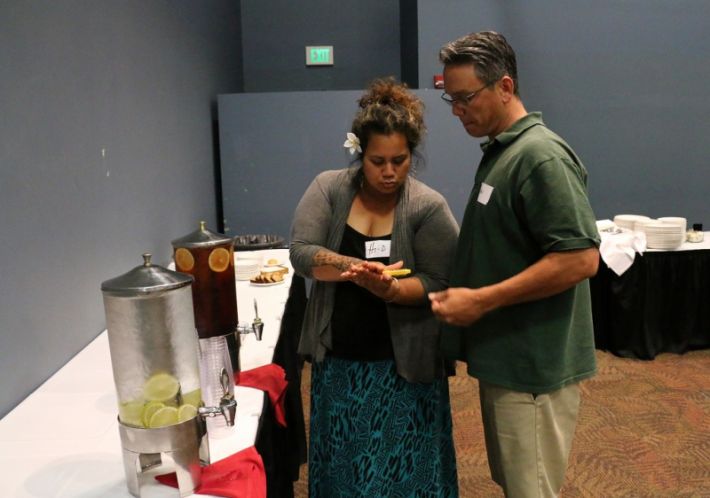More than 50 teachers—including a handful of Kamehameha Schools (KS) kumu—attended two workshops on Maui and Hawaiʻi Island this past February. Educators were equipped with training that will help them integrate energy education into their classrooms.
An additional workshop will take place on Oʻahu on April 12 and is open to all K-12 kumu.
The workshops—sponsored by Hawaii Energy and presented by the National Energy Education Development (NEED) Project provided hands-on classroom kits (valued at $300) to those in attendance.
The classroom kits contain materials and activities for teachers and students to measure their energy consumption and make educated energy use decisions. The kits were offered at three different learning levels for haumana of all ages.
“Hawaii Energy is excited to work with The NEED Project and schools such as Kamehameha Schools to provide teachers with engaging classroom materials to help the State accelerate towards our clean energy goals,” said Chelsea Harder, Hawaii Energy transformational specialist. “In the last year alone, our program was able to work with 292 teachers from 108 schools. Since 2011, we have reached over 19,000 students.”
During the workshop, teachers were able to participate in various hands-on energy lessons. One activity taught educators to use Kill-a-Watt meters which measure the electrical consumption for any pluggable device. These explorations allowed kumu to practice using the various tools and instruments in their kit while getting a better understanding of energy use.
“Energy is a significant expense in Hawaiʻi, and as the use of petroleum must be reduced, residents will need to be increasingly aware of their energy consumption,” explains the NEED project curriculum director Emily Hawbaker. “[The kit's] activities encourage students to consider how they live each day, while loving and respecting the ʻāina (land).”
“These trainings are a great opportunity to infuse sustainability into the classroom and support KS' SP2020 Goal 2 since public and private school teachers are invited to attend and collaborate,” said KS sustainability manager Amy Brinker. “These types of events provide a venue for us to collaborate with others who share KS' commitment toward the improvement of the well-being of the lāhui.”
To register for the Oʻahu workshop on April 12, please visit the Hawaii Energy website. Registration should be completed seven days prior to the workshop.
Sign up today!
Register online at the Hawaii Energy website.
When:
April 12, 2016
8 a.m. – 3:30 p.m.
Where:
Neal S. Blaisdell Center
777 Ward Avenue
Honolulu, HI 96814
Free classroom energy kit and reimbursement for substitute teacher costs. Breakfast and lunch will be provided by Hawaii Energy.

Keonepoko Elementary Teacher Hidi Boteilho (left) and Kalani Soller with KS’ Kealapono (right) participate in a thermal energy activity.

NEED Project curriculum director, Emily Hawbaker explains how to use a light meter and how they can help us make educated energy decisions.
_(1024x1023)__large-article1__www-width-710/jpeg/1855)
Hawaii Energy is the ratepayer-funded energy conservation and efficiency program helping Hawaiʻi, Honolulu and Maui residents and businesses to save energy and money on their electric bills by offering rebates and educational opportunities. The program is administered by Leidos Engineering, LLC under the direction of the Hawaii Public Utilities Commission.
TAGS
facultystaff,
sustainability,
professional development,
ce&r,
sp2020
CATEGORIES
Kaipuolono Article, Newsroom, Community Events, Department News, Features
Print with photos
Print text only










